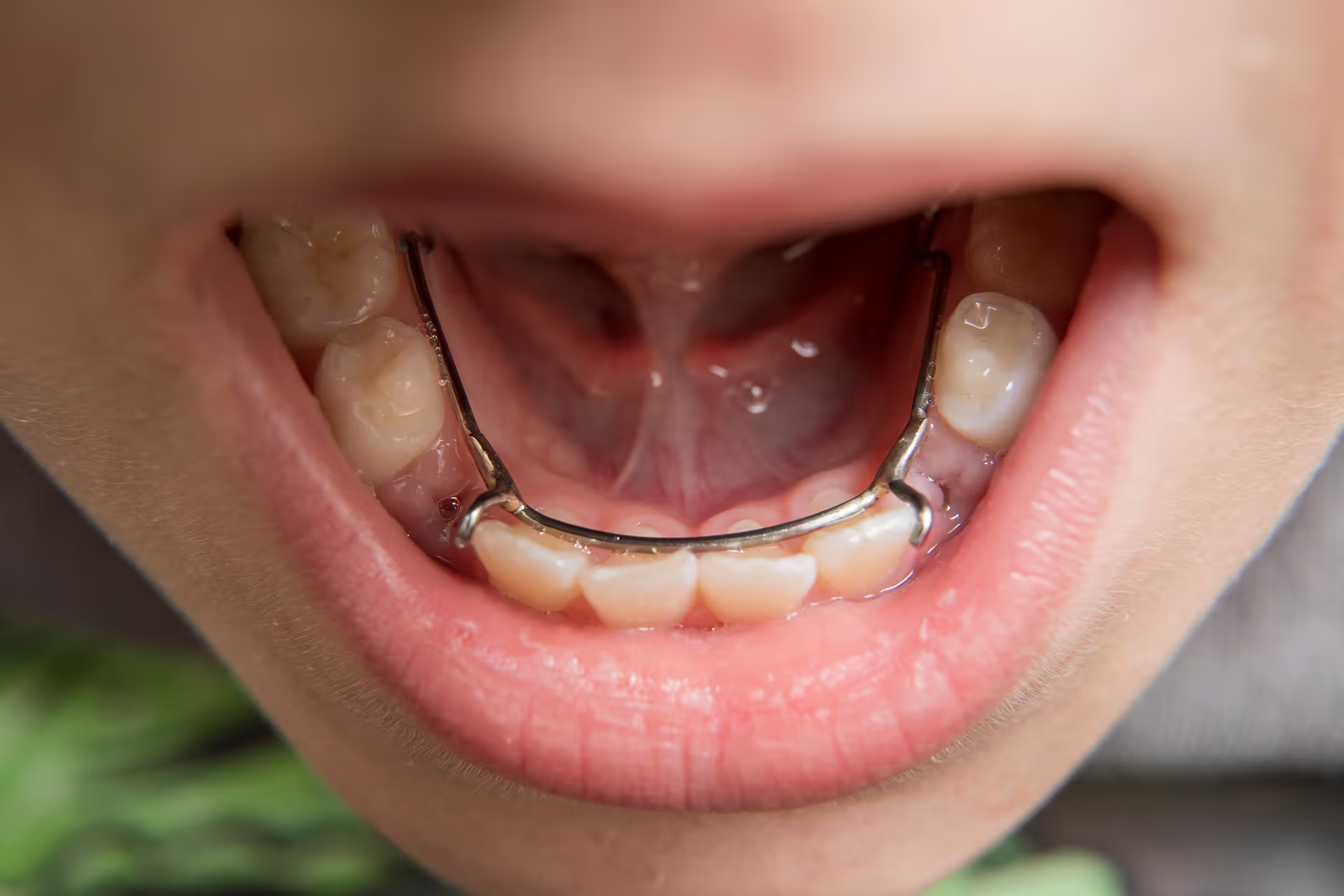Why Would My Child Need A Space Maintainer?
Normally, your child’s baby teeth fall out naturally as their permanent teeth erupt and take their place. But in some cases, your child may lose one or more of their baby teeth early. This could happen due to lots of things, like:
- Dental injuries
- Severe tooth decay
- Tooth infections
- Gum disease
When your child loses a baby tooth early and they don’t get a space maintainer, the nearby teeth will shift toward the empty space in their mouth. This could cause problems when their adult teeth erupt, since the baby teeth help hold the proper space for your child’s adult teeth as they grow. If your child’s teeth have shifted, their adult teeth might not emerge properly, which can cause lots of other complications.
If your child has lost one or more of their baby teeth prematurely, space maintainers are usually recommended by Dr. Alex at Kids Tooth Team. These are small devices that place pressure on the teeth to prevent them from shifting, and allow your child’s adult teeth to erupt without any issues.
What Type Of Space Maintainer Will My Child Get?
Most kids will get a semi-permanent space maintainer. This type of space maintainer can only be removed by a dentist. The most common type of semi-permanent space maintainer is a “band and loop” space maintainer. There are a few other types of semi-permanent space maintainers available, but they are only needed in certain situations.
Band and loop space maintainers are made of stainless steel. It consists of a steel band that wraps around one of your child’s teeth, which looks similar to the molar bands used to hold braces in place. This band is attached to a loop of metal. This loop of metal presses against the tooth on the other side of the gap, maintaining the proper spacing between their teeth.
Removable space maintainers also may be an option. These are acrylic (plastic) space maintainers that can be removed at any time, like for brushing and flossing. They may be recommended if your child’s adult tooth is about to grow in, and a semi-permanent space maintainer is not necessary.
However, removable space maintainers are not recommended for most kids, though, since they're not quite as good at maintaining gaps, and some kids may not be diligent about wearing a removable space maintainer.
Understanding The Space Maintainer Placement Process
The space maintainer process takes two appointments at Kids Tooth Team. At your child’s first appointment, Dr. Alex will examine their mouth. She will make sure that a space maintainer is right for them. In some cases, such as when the adult tooth is about to erupt, it may not be necessary to place a space maintainer at all.
Once she approves your child for a space maintainer, she’ll take impressions of their teeth and the gap in their smile. She will send this information to a dental lab. The lab will build a space maintainer that will maintain the proper gap in their smile. It may take several weeks for the lab to build the space maintainer and send it back to Kids Tooth Team.
When their space maintainer is done, you’ll bring your child back to Kids Tooth Team one last time. Dr. Alex will check the fit of their space maintainer, then attach it to their tooth with dental cement so that it won’t move or shift. After that, you’ll be sent home.
How Long Will My Child Need To Keep Their Space Maintainer?
Once your child’s space maintainer is in place, they’ll keep it until their adult tooth starts to come out. During your child’s checkups at Kids Tooth Team, Dr. Alex will monitor the progress of their adult teeth. When an adult tooth is about to erupt underneath the space maintainer, it will be removed so that the tooth can emerge properly.
This means that the length of time your child will keep their space maintainer varies. It depends on which adult tooth your child has lost, and how early they lost it. Once your child’s space maintainer is in place, Dr. Alex can give you more information about what to expect, and when it may be possible to have it removed.
Understanding The Space Maintainer Removal Process
It only takes a few minutes to remove a space maintainer. Space maintainer removal may be done as part of your child’s regular checkup at Kids Tooth Team, or you may need to schedule a separate appointment.
To remove a space maintainer, Dr. Alex will simply use a special type of pliers to grab the band that holds the space maintainer onto your child’s tooth. She’ll wiggle the band to break the cement that holds it in place. Then, she’ll remove the space maintainer, and clean away any dental cement that’s still on your child’s tooth.
That’s it! It takes only a minute or two to remove your child’s space maintainer. Once it’s out, your child’s adult tooth can erupt properly, and it will help maintain the proper spacing in your little one’s smile.
Need More Information? Ready To Schedule An Appointment? Contact Us Today!
At Kids Tooth Team, Dr. Alex is always happy to meet new patients. Whether you think your little one may need a space maintainer, we’re here for you. Book an appointment online, or give us a call to schedule a consultation today, and get the care your child needs right away. We have three office locations in Buda, TX, Kyle, and South Austin, TX.

